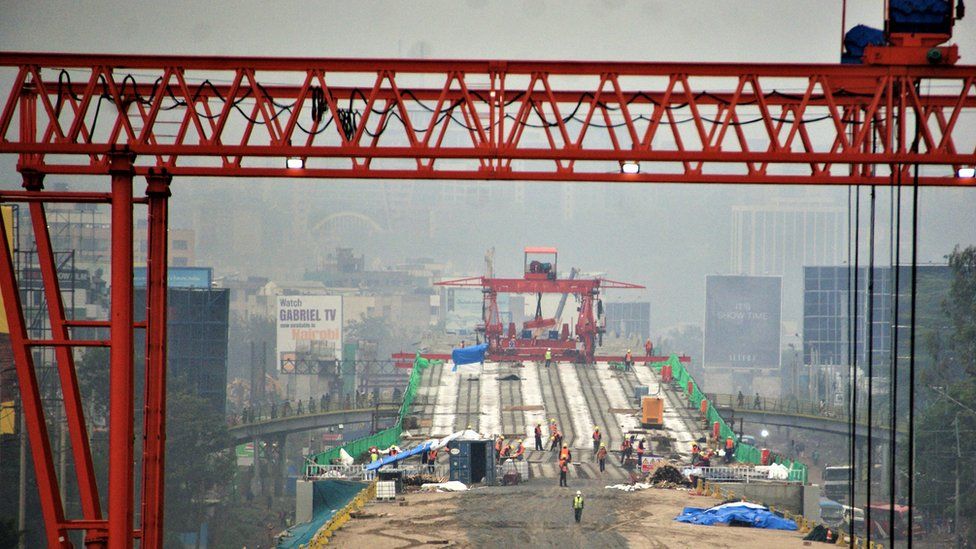On another hot sticky afternoon in Nairobi, I find myself stuck in yet another hours-long jam in the city’s famously traffic-clogged roads.
But in recent months this situation has become even worse because of the construction of the Nairobi Expressway, injecting a new level of chaos into the capital.
When finished, it will be a 27km (17-mile) highway, some of it elevated, that will connect Jomo Kenyatta International Airport in the east of the city to the Nairobi-Nakuru highway in the west.
The $550m (£410m) project is set to dramatically change the city’s skyline and is meant to ease traffic flows in and out of the centre of East Africa’s main commercial hub.
Kenyan officials described the expressway as an essential infrastructure project that will spur modernisation.
The partially elevated highway was proposed about 10 years ago, but delays meant it was only launched in October by President Uhuru Kenyatta.
Yet the speed of its construction is leaving many Nairobians surprised. It already looks like a giant gash through the city and the constant hum of construction noise, lorries whipping up dust and beeping car horns all add to the confusion.
‘Elites zoom above’
It is being financed and constructed by the China Road and Bridge Corporation (CRBC) – and the Chinese firm will operate the highway under a public-private partnership.
This means the four- and six-lane dual carriageway, with 10 interchanges along the route, will not be free to use – drivers will have to reportedly pay a toll of between $2 and $3.
The aim of improving Nairobi’s roads seems like a laudable cause, but some argue it could actually exacerbate the city’s traffic problems and the huge social and economic divide.

Most residents use matatus – the private pimped-up minibuses – or boda boda motorbike taxis to travel to and from work.
But questions remain over whether these forms of transport will be able to afford the toll fees to use the highway.
It could mean they are left in the jams below the highway as the elite zoom past them above.
Another bone of contention is the environmental impact of the project. Focus internationally has been on Nairobi’s famous fig tree, saved by the president after an outcry.
Yet hundreds of other trees are being felled to make way for the new road, and campaigners have little faith that any will be replanted – and it will also mean the permanent loss of some green areas and destruction of bird habitats.
Many see it as a destruction of the legacy of Kenyan Nobel Peace Prize winner Wangari Maathai, who famously stood up to major government-backed developments in Nairobi.
This highway project is the latest in Kenya’s China-backed infrastructure splurge in recent years.
In 2019 I took the Standard Gauge Railway (SGR) from Nairobi to the port city of Mombasa – a six-hour journey in comfort, though the ticket price and check-in made it feel more akin to a taking a flight.
The $3.2bn Chinese-built and financed railway project was meant to link the coast to the town of Naivasha, 76km north-west of Nairobi, and then on to Uganda’s capital, Kampala.
But this has now been suspended because Kenya failed to secure funding from the Chinese to complete the line. For now construction work is on hold until the finances are sorted out.
Because of the SGR, Kenya is now massively in debt to China, with Chinese loans comprising 21% of its external debts.
It has left some wondering about the wisdom of the Nairobi Expressway.
However, no matter the cost to Nairobians, it seems this project will get finished – in fact the Chinese company building it announced it would open six months ahead of schedule – just in time for Kenya’s next presidential elections in 2022.
Ismail Einashe in BBC






